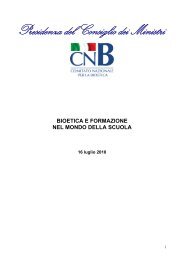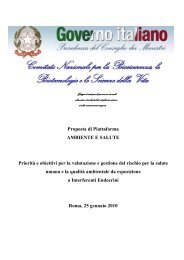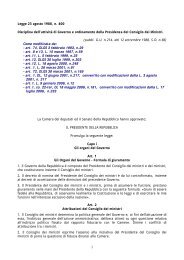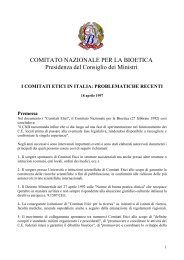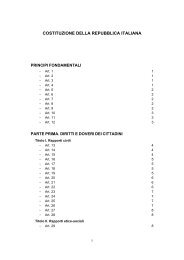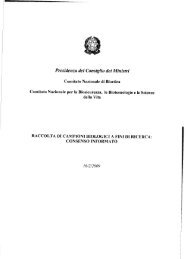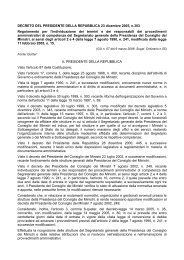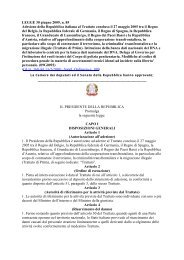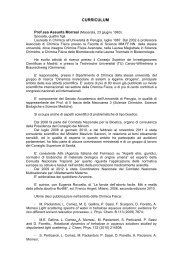President
President
President
Create successful ePaper yourself
Turn your PDF publications into a flip-book with our unique Google optimized e-Paper software.
in the individual clinical perspective, without concentrating on the social and<br />
institutional variables affecting suicidal behaviour.<br />
However, at the beginning of 2000 a series of studies began in Italy<br />
making it possible to set out a first risk profile with respect to the situational and<br />
environmental variables ( (Manconi, 2002; Manconi, Boraschi, 2006). Prisoners<br />
take their own lives with greatest frequency in the first year of custody (64.5%<br />
in the two-year period 200-2001, 61% in 2002, 63% in 2003); most of the<br />
suicides of the first year are concentrated in the first days and weeks. This is<br />
related to the traumatic impact with the prison environment as a factor that<br />
drives people to acts of self-suppression.<br />
Furthermore, a connection is highlighted between suicides and the<br />
overcrowding of prisons: overcrowding, besides limiting the spaces and causing<br />
the deterioration of hygiene, jeopardises relations with the personnel and limits<br />
the possibility of accessing opportunities for recreation, training and work.<br />
Even the hardship linked to overcrowding would be a factor that drives<br />
inmates to take rash actions, besides being predisposing.<br />
Another element concerns the signs preceding suicide: in both the studies<br />
mentioned it seems that a considerable number of suicides could have been<br />
defined ‘announced suicides’, since the prisoners were suffering from bad or<br />
chronic depression or had already attempted to take their life on more than one<br />
occasion.<br />
With regard to the juridical situation of those serving a prison sentence<br />
and the relative psychological implications, the two studies highlight the lower<br />
number of suicides among definitive subjects (e.g. in 2000/2001 44.2% of<br />
suicides was committed by definitive prisoners; 36.4% in 2002 and 48.3% in<br />
2003). This shows that there are more suicides among those awaiting<br />
committal for trial or a first degree sentence or an appeal, even though with<br />
noticeable fluctuations. Aside from these variations, there is sufficiently stable<br />
data represented by the over-representation of suicides among the nondefinitive<br />
inmates with respect to the whole non-definitive prison population<br />
(those with a definitive sentence are more than 60% of the prisoners). This<br />
means that, among the definitive prisoners, the propensity to suicide is<br />
considerably lower than that recorded among the non-definitive ones.<br />
With regard to age, it is mainly the young men that take their own lives.<br />
Considering the cases of suicide in the various age groups and comparing<br />
them with the distribution of the prison population in these groups, a strong<br />
propensity to suicide between 18 and 23 can be seen. When a comparison is<br />
made with the general population referring to the 2002 data for example, it can<br />
be said that between the ages of 18 and 44 there are 50 times more suicides<br />
inside prison than outside (Manconi, Boraschi, 2006, 22 onwards).<br />
Another survey confirmed that the narrowing of spaces and the<br />
deterioration of relations, together with the lack of opportunities, can in fact be<br />
related not only with suicide but more generally with self-harming and an<br />
aggressive attitude towards the staff and other inmates (Buffa, 2003). This<br />
study also showed that such phenomena are not distributed uniformly in the<br />
overcrowded prisons, but are more frequent in those sections with prisoners<br />
having less personal and social resources, who are less able to adapt and to<br />
take advantage of the few opportunities that prison life offers, particularly in<br />
situations of overcrowding. According to the author, this is a reconfirmation of<br />
E. Goffman’s hypothesis on the total institutions and the so-called ‘sector<br />
system’: in the competition that is aroused, the least gifted part finds itself living<br />
196




